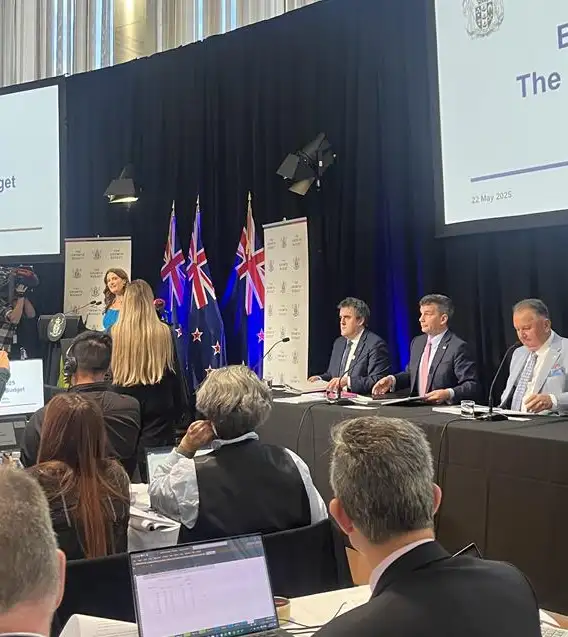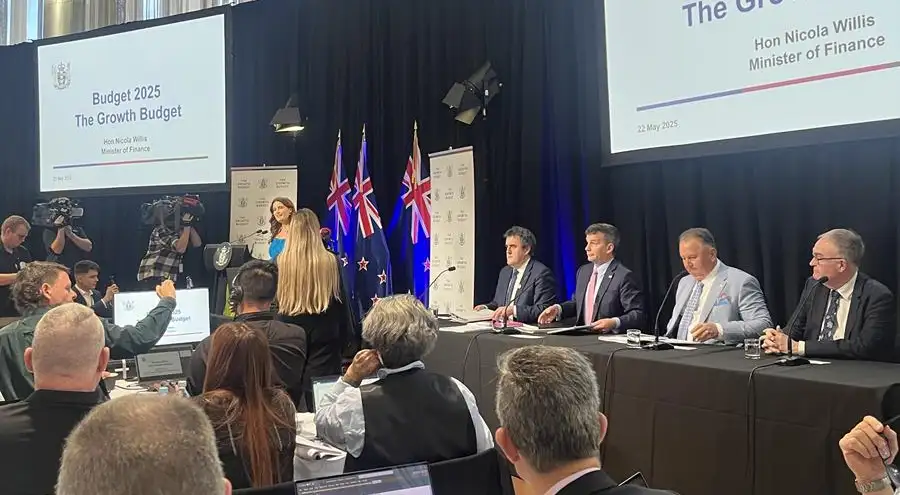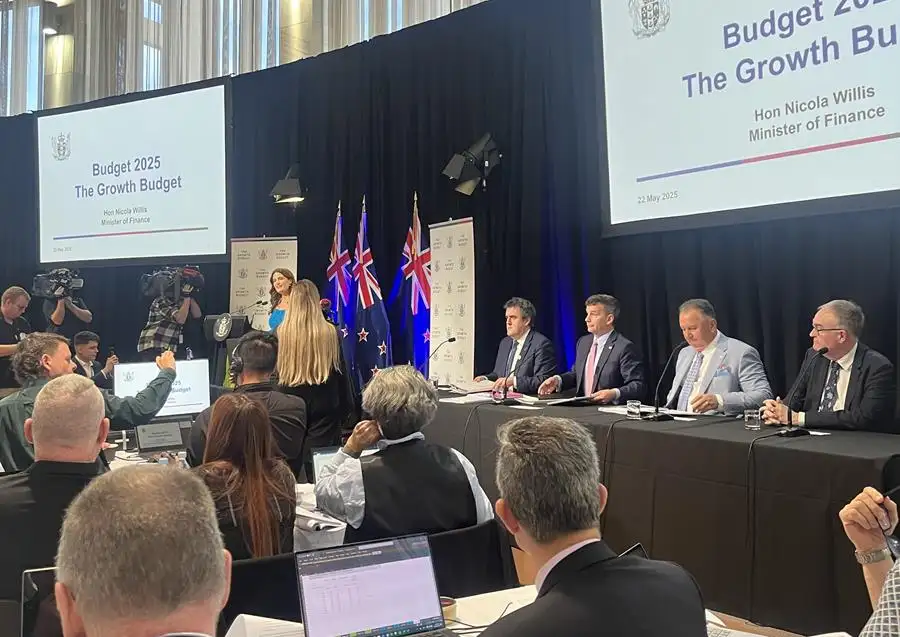Analysing Budget 2025: What’s in it for local government?



22 May 2025
Below we list key aspects of the Budget that will be of most interest to local government.
Local government funding and financing
New funding
- The Rates Rebate Scheme has been expanded, with $33.375m of new funding and $120.625m held in contingency. This allows the income threshold at which SuperGold Cardholders can access rates rebates and associated administrative costs to lift to $45,000. The maximum rebate for the scheme will increase from $790 to $805.
- There were no further commitments from the Government to additional funding or financing tools for local government. However, there are indications within Budget documents that incentives for communities and councils to support housing growth are still actively being considered.
Regional deals
New funding
- There is $11.832m over four years to continue delivering the Regional Deals Programme through a Secretariat function within the Department of Internal Affairs.
- No government funding has been set aside for any initiatives agreed to as part of regional deals.
Transport
New funding
- An extra $143.620m provides for two years of additional funding for metropolitan rail renewals in Auckland and Wellington.
- $141m in operating funding and $320m in capital support the maintenance, operation and renewal of the national rail network through the Rail Network Investment Programme.
- An unknown sum has been allocated to provide capital funding held in contingency for the Cook Strait ferry replacement programme, involving procurement of two rail-enabled ferries and associated infrastructure at the Wellington and Picton ports. The figures have been withheld due to commercial sensitivities.
Reductions in funding
- Cuts include $56.686m less funding for Public Transport Bus Decarbonisation. This savings initiative returns currently uncommitted funding distributed by the New Zealand Transport Agency to Public Transport Authorities for initiatives that support decarbonisation of the public transport bus fleet. That means the winding down of programmes where outcomes can be achieved using alternative funding sources, such as the National Land Transport Fund. There is no change to current service levels from the return of this funding. All remaining funding – equivalent to an average of $3.505 million per annum over the forecast period – is fully committed.
- Similarly, uncommitted funding from the Transport Resilience Fund will be returned. This fund is distributed by the New Zealand Transport Agency to councils for small-scale resilience works on the local roading network. The $40.5m saving comes from the wind-down of programmes where outcomes can be achieved using alternative funding sources, such as the National Land Transport Fund. All remaining funding – equivalent to an average of $12 million per annum over the forecast period – is fully committed.
Resource management
New funding
- $23.844m of funding will go towards implementing the first two years of the National Direction programme and Phase 3 of the Resource Management Act Reform. This initiative also reprioritises surplus funding within Vote Environment to support accelerated delivery of policy and scientific input, standardised zoning, legislative drafting, upholding Treaty and settlement commitments, legal support and a programme business case.
Climate change and climate resilience
New funding
- An extra $219m has been allocated to complete recovery works on local roads damaged during the 2023 North Island weather events (Cyclone Gabrielle and Auckland Anniversary Floods). The programme was previously funded through to the 2025/26 financial year only.
- There was no new funding to support the implementation of the Government’s upcoming climate adaptation framework.
Environment
Changes to funding
- There is a $232.521m change in the allocation of Waste Disposal Levy revenue. Revenue from the levy will fund a broader range of activities across government that reduce environmental harm or increase environmental benefits, which are currently funded by general Crown revenue. Accordingly, the total amount in the Waste Minimisation Fund will reduce by 49 per cent. An average of $30.0m per annum remains in the Waste Minimisation Fund for new initiatives.
Reductions in funding
- Environmental funds will receive $25.973m less funding. This reflects simplification of the Ministry for the Environment’s fund landscape and broader use of the Waste Disposal Levy revenue, which will continue funding some areas through a single environmental investment fund containing approximately $70.0m average per annum.
Water
Reductions in funding
- The ‘Taumata Arowai, New Crown Agent Regulator for Water Services’ tagged operating contingency will return $14.737m of funding that is no longer required. Some of this funding is intended to be replaced with third-party revenue, including from councils and CCOs via the recently instituted Taumata Arowai levy.
Tourism
New funding
- The Tourism Strategic Infrastructure and System Capability appropriation will increase by $8.423m to fund pre-committed projects from the International Visitor Conservation and Tourism Levy.
- There’s an extra $35.0m per annum of funding for tourism-related infrastructure and systems, including capability, in accordance with an agreed International Visitor Conservation and Tourism Visitor Levy Investment Plan. This is being managed outside Budget allowances as the International Visitor Levy provides the source of funding.
- The Department of Conservation has been allocated an extra $32m over four years for committed levy-funded projects to boost biodiversity and the tourist economy.
- Improvements along the Milford Road corridor get an extra $4.0m in International Visitor Conservation and Tourism Levy funding.
Changes to funding
- The Department of Conservation will receive an extra $20.0m per annum through the International Visitor Conservation and Tourism Levy, resulting from the recent rate increase to $100. In combination with the existing $35.0m in funding, this provides the Department of Conservation with a total annual investment envelope of $55.0 million per annum. This is being managed outside Budget allowances, as the International Visitor Levy provides the source of funding.
Housing
New funding
- There’s an extra $10m in operational funding and $25m in capital funding to scale-up the Greenfield Model, delivered by the National Infrastructure Funding and Financing Agency (NIFFCo). The Greenfield Model works to reduce the cost of borrowing for developers during the initial, most risky stages of housing development. This initiative aims to help ensure new homes continue to be enabled in areas of highest need while broader reform is worked through.
- Existing commitments for social housing delivery get another $42m via the Early-Stage Operating Supplement for Community Housing Providers. This initiative will be fully funded through reprioritisation of existing funds within Vote Housing and Urban Development.
- An extra $182.493m will maintain key housing services, including housing support services, transitional housing, and social housing provided by Community Housing Providers. This initiative will be fully funded through reprioritisation of existing funds within Vote Housing and Urban Development.
- There’s new funding for new social housing and affordable rental investments ($176.751m Opex, $41.207m opex in contingency, $191.256m capex, $249.560m capex contingency). This initiative provides funding to support delivery of additional social homes and affordable rental properties, including for whānau Māori, and establishment of a Flexible Fund for different typologies and tenure types (social homes and affordable rentals). This will consolidate funding for different tenures to enable greater clarity over what the Government is purchasing, and improve the ability to direct funding to the highest priority areas. This initiative will be fully funded through reprioritisation of existing funds within Vote Housing and Urban Development.
Changes to funding
- A savings initiative reprioritises a total of $382.8m of capital funding and $400.5m of operating funding from descoping programmes across the Housing Portfolio. This funding will be used to maintain key housing services and enable new housing investment, including delivery of additional affordable homes for whānau Māori and establishment of a Flexible Fund for different typologies and tenure types. This includes reprioritising operating funding from the Housing Infrastructure Fund to deliver $9.1 million total operating savings.
Other
New funding
- There’s $1.4m to fund an exemption for the Waitaki District Council from New Zealand Emissions Trading Scheme surrender obligations that arose from the remediation of waste from two historic illegal dumping sites. The exemption will result in a reduction in Crown revenue.
- Local journalism gains $6.4m in funding, distributed through NZ On Air, with a particular focus on reporting on local democracy and justice matters of interest to communities.
Changes to funding
- The default rate for employee and employer contributions for KiwiSaver will rise from 3% of salary and wages to 4% in two steps. The increases are being phased in over a three-year period. This will create increased employee costs for councils.
Treasury identifies risks to the Economic and Fiscal Forecasts in the Budget Economic and Fiscal Update 2025. We’ve pulled out the content of interest to local government here.